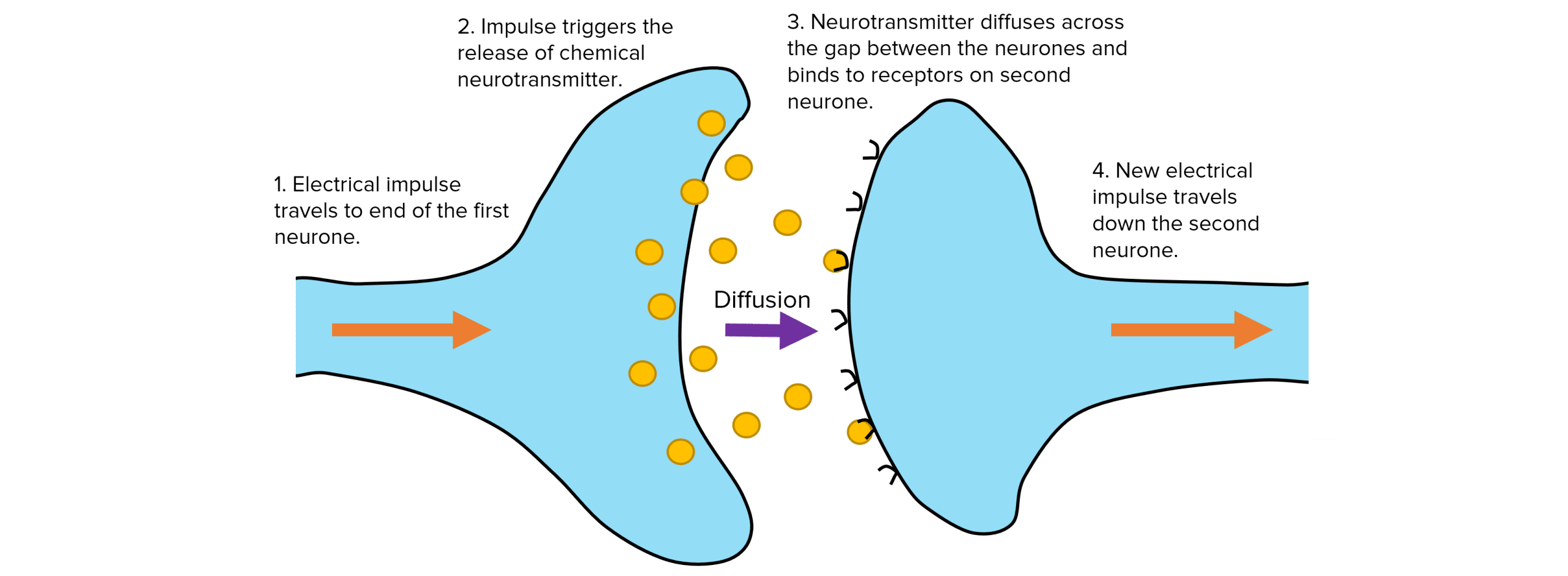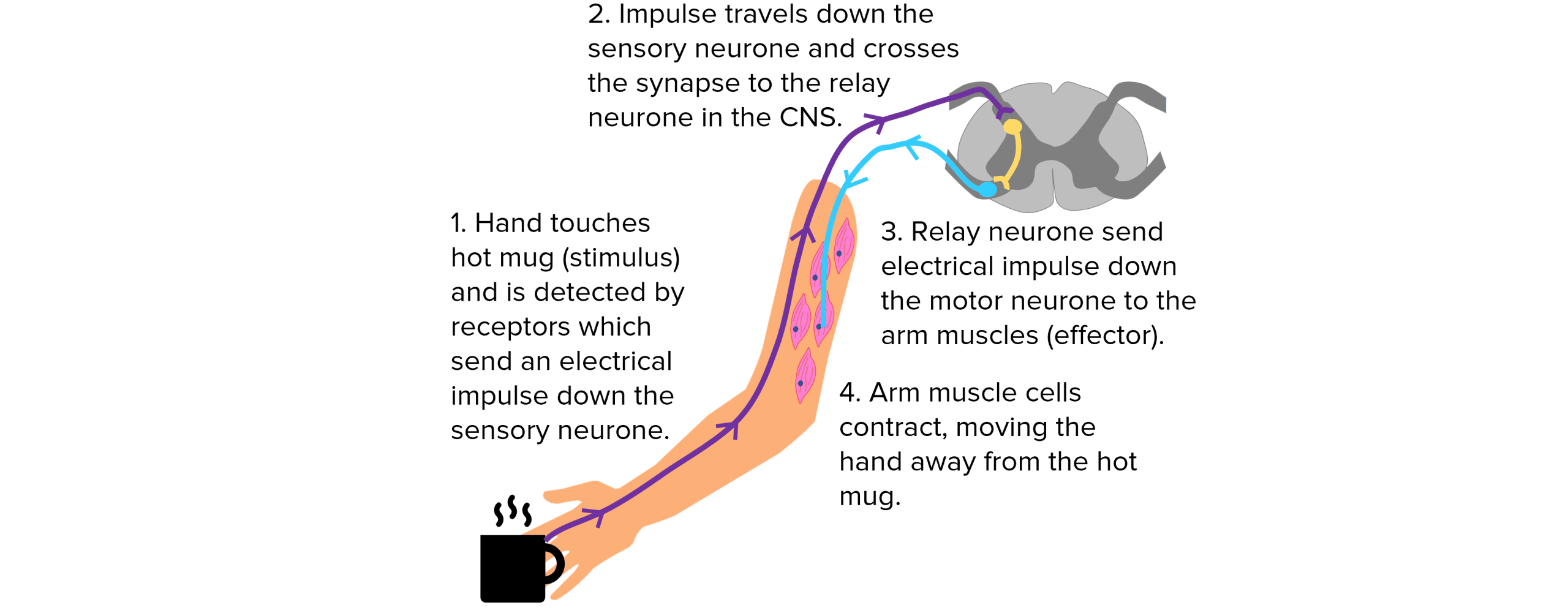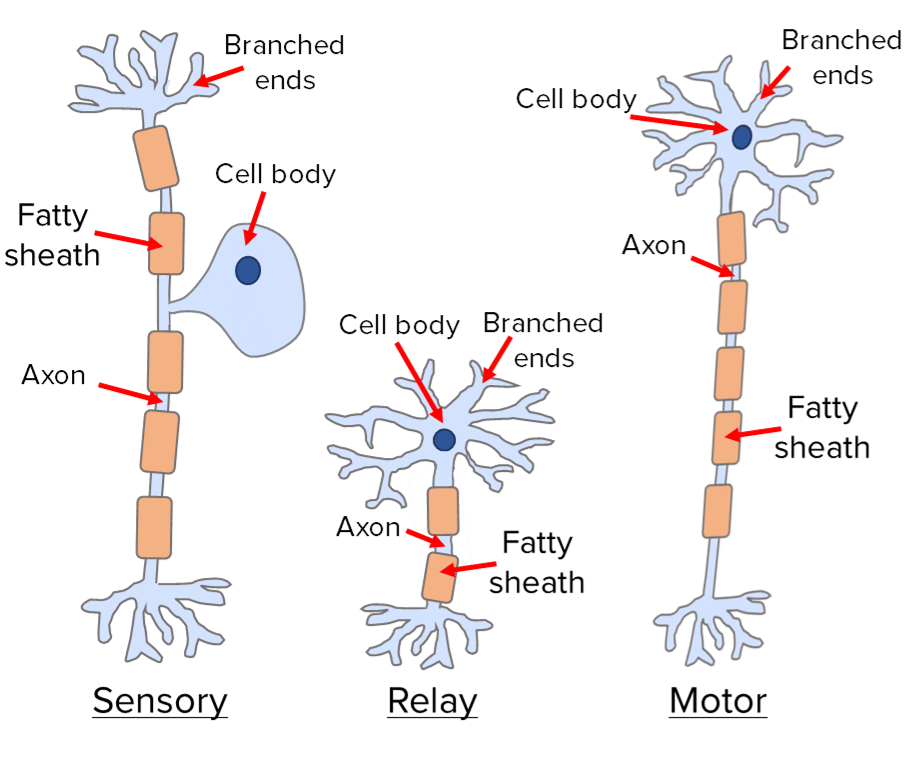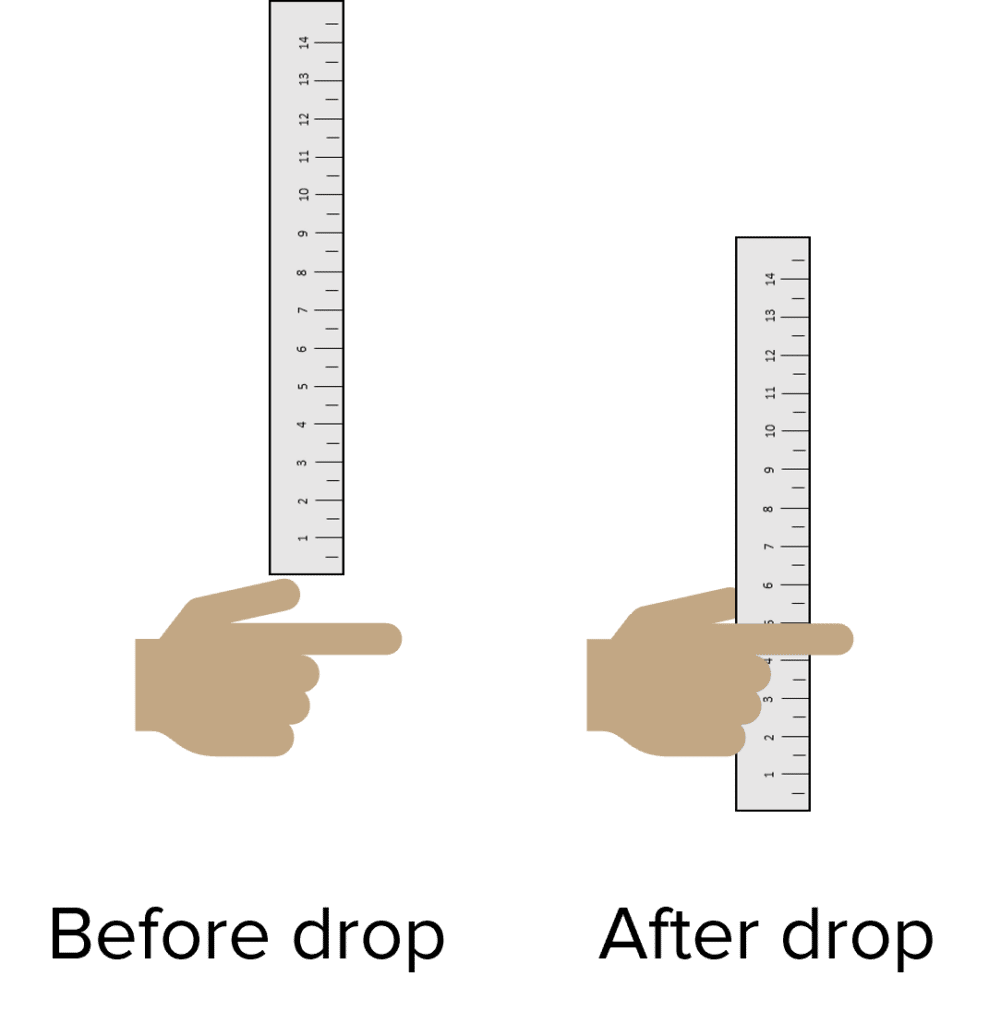The Nervous System
The Nervous System Revision
The Nervous System
The human nervous system allows the body to respond to stimuli from the environment and coordinate responses. It consists of receptors, effectors, the central nervous system and different types of neurone. Electrical impulses are passed between neurones (across the synapse) as chemical neurotransmitter. When a rapid response is required, impulses travel along the reflex arc.
Reacting to Stimuli
The human nervous system detects stimuli from the external environment, transports the message around the body along neurones and coordinates behavioural changes in the body in response.
1. Receptors
- Stimuli (changes in the environment) are detected by receptor cells.
- Different receptors are specialised to detect different types of stimuli, e.g. taste receptors on the tongue, sound receptors in ear, light receptor cells on the retina of the eye.
2. Sensory neurones
- Carry electrical impulses from the receptors to the central nervous system (CNS).
3. Central nervous system (CNS)
- Consists of the brain and spinal cord.
- It receives and processes electrical impulses from receptor cells and organises a response.
- It will then send an impulse along a motor neurone.
4. Motor neurones
- Carry electrical impulses from the CNS to effectors.
5. Effectors
- Effectors receive electrical impulses from the CNS and respond to the stimuli. This could be either contracting a muscle or secreting a particular hormone from a gland.
Example:

Synapses
Synapses are where two neurones join together and use chemicals to transfer the electrical nerve impulses across the gap between them.
- An electrical impulse travels along the first neurone to the end.
- This causes the release of chemicals called neurotransmitters into the gap between the neurones.
- Neurotransmitter diffuses across the gap and binds to receptors on the second neurone.
- This sets off a new electrical impulse that travels along the second neurone.

Reflex Arc
When a person is in danger of becoming injured, the body reacts quickly to prevent or limit the damage. It does this through the reflex arc. Instead of sending signals all the way to the brain, the impulse is sent to a relay neurone in the central nervous system (CNS). This quickly sends impulses to effectors to produce a response that will limit or prevent damage.
- Danger is detected by receptors.
- Impulse is sent from receptors, down a sensory neurone to CNS.
- Impulse is sent along a relay neurone in the CNS and straight down a motor neurone to an effector.
- The effector produces a quick response to prevent or limit damage.
This response is involuntary as it does not involve the conscious part of the brain.
Example:

The Structure of Neurones
Neurones are specialised to carry electrical nerve impulses around the body:

- Long axon to carry the impulse over long distances.
- Branched at both ends to easily pass signals between them.
- Axon is insulated in a fatty sheath to help the impulse travel quickly.
Sensory, motor and relay neurones all vary slightly due to their different functions.
Sensory and motor neurones are longer than relay neurones because they have to carry impulses over longer distances. The cell body of sensory neurones branches off half way down the axon but the cell bodies of motor and relay neurones is at one end.
Neurones bundle together to make nerves.
Required Practical
Investigating human reaction times.
Reaction time is the time taken to respond to a stimulus and can be affected by many factors such as age, stress, drugs and background noise.
You can perform simple experiments to determine how these factors affect reaction time; this example uses caffeine intake.
Doing the experiment

- Ask a person who has not had caffeine that day and ask them to hold out their hand.
- Hold a ruler vertically, 0 facing downwards, above their hand.
- Tell them they must try to catch the ruler when it falls but do not tell them when that will be.
- At a random time, drop the ruler into their hand.
- Record where the top of their finger is on the ruler when they catch it. The quicker their reaction time, the shorter the distance will be on the ruler.
- Repeat this experiment a few times without caffeine to calculate the mean distance which equates to an average reaction time.
- Repeat the whole experiment again after the person has had a caffeinated drink to investigate its affect on the reaction time.
Analysing the results
You can now compare the distance/ reaction times of someone before and after caffeine.
Example:

We can conclude that caffeine intake speeds up a persons reaction time.
The Nervous System Example Questions
Question 1: Describe how an electrical impulse crosses a synapse.
[4 marks]
- The impulse arrives at the end of the first neurone and causes the release of neurotransmitter.
- The neurotransmitter diffuses across the gap.
- The neurotransmitter binds to receptors on the second neurone.
- This causes a new electrical impulse to travel along the axon of the second neurone.
Question 2: A person stands on something sharp. Describe how the body will respond involuntarily through a reflex arc.
[5 marks]
- The sharp object will be detected by a receptor in the foot.
- This will send an impulse along a sensory neurone to the CNS.
- The impulse will be passed along a relay neurone in the CNS to a motor neurone.
- The motor neurone will carry the electrical impulse to muscle cells in the leg and foot (effector) causing them to contract.
- This moves the foot away from the sharp object to prevent or limit the amount of damage.
Question 3: Name 2 ways that neurones are adapted for their function.
[2 marks]
Any 2 from:
- Long axon to transport impulses over long distances.
- Branched at both ends to pass signals easily.
- Axon is insulated in a fatty sheath to help impulses travel along quickly.
The Nervous System Worksheet and Example Questions
Human Nervous System Questions
GCSEOfficial MME
MME Premium Membership
£19.99
/monthLearn an entire GCSE course for maths, English and science on the most comprehensive online learning platform. With revision explainer videos & notes, practice questions, topic tests and full mock exams for each topic on every course, it’s easy to Learn and Revise with the MME Learning Portal.
Sign Up Now





